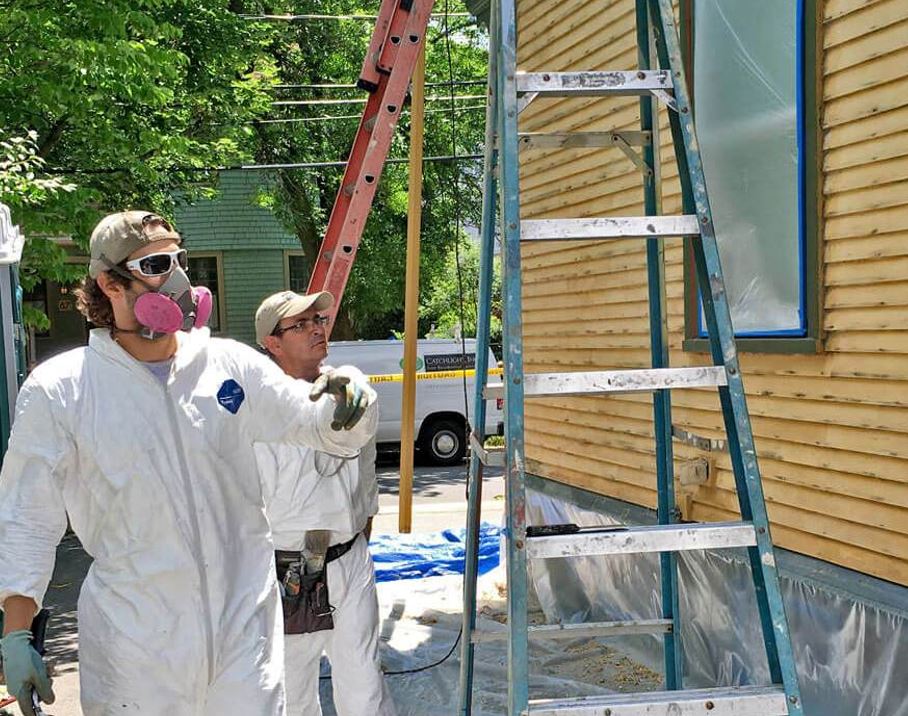
Lead paint is incredibly dangerous to have in the home. Lead has been known to cause a wide range of physical and mental health problems, including anaemia, nervous system problems, and learning disabilities in children. Although the problem may not arise until the paint begins flaking and peeling, it is best to curb the issue ahead of time by hiring a reputable company to remove it from your home. Here are some essential questions to ask those companies to assist you in deciding which is best suited for the job.
What are Your Qualifications and Experience in Lead Removal?
The Lead Renovation, Repair and Painting (RRP) Rule requires that all companies which engage in lead removal practices or general disturbance of painted surfaces are certified before offering commercial services. All employees must be trained in safe lead removal practices as well. (Additionally, only certified renovators, lead-based paint inspectors, and risk assessors can carry out the testing methods described below.)
Finding a certified, high-quality service for lead paint removal in Boston can be challenging, given the sensitivity of the work. Separating inexperienced companies from the pros is as simple as asking them about their previous experience with lead paint removal.
When asking this question, keep in mind that there are numerous methods one can use to resolve the problem of lead paint in the home. If your contractor has only solved lead-based paint problems using temporary fixes or has not handled lead removal before, they are not the right choice for this work.
How Do You Test for the Presence of Lead?
Your home’s age will clue you into the possibility of there being lead-based paint in your home. According to the Environmental Protection Agency (EPA), there are factors that increase the likelihood:
- Homes built between 1960-1977 have a 24% greater likelihood than newer homes of containing lead-based paint.
- Houses that were constructed between the years of 1940-1959 have a 69% higher chance of having lead-based paint than homes built after that period.
- Any homes built before 1940 are 87% more likely to have lead-based paint than all others.
Millions of homes still contain lead-based paint, but you cannot be sure until you test for it. (As you can see, even if your home is quite old, there is no guarantee that it contains lead paint. Without testing for the presence of this toxic substance, you may waste money having a contractor work to remove something that is not there.)
According to the United States Department of Agriculture, checking for the presence of lead can be accomplished by employing any of the following techniques:
- Sending a sample (i.e., a paint chip) to a certified laboratory for analysis.
- Using an x-ray fluorescence (XRF) tool to detect the amount of lead on a given surface.
- Swabbing the surface and testing the sample in a chemical test kit.
The EPA recommends only the first two methods since chemical test kits are not equipped to accurately determine the extent of lead-based paint on any surface. These kits cannot always differentiate lead paints from other, safer kinds, so it may yield false results. If your contractor chooses the swabbing and testing method, you may want to look elsewhere, depending on the likelihood of lead being present in your home, as described above.
What Techniques Do You Use for Lead Removal?
There are two primary methods a contractor can use to remove lead paint from your home. These include:
- Removal: Your contractor may use various tools to remove paint from the interior of your home. Wire brushes are commonly used; however, the company may also employ the “wet hand scraping” technique using liquid paint removers. They may also use an electric sander with a HEPA (high-efficiency particulate air) vacuum, along with sanding sponges to minimize the dust produced. The contractor may also apply heat to remove the lead paint. If this is their preferred route, verify the heat gun’s temperature, as it should never exceed 1100
- Replacement: If the paint itself cannot be removed from the walls, ceilings, or other surfaces in your home (or if the contractor prefers not to remove it with the above methods), the lead removal company may choose to replace certain elements in your home instead. For instance, they may install new doors, windows, or any other components that have been coated in lead-based paint.
The company’s chosen method of removal will directly influence the price, and potentially the timeline, of the project. Moreover, the state of your home will determine which option they choose. You will need to provide the details of your home regarding the interior paint for the company to provide an accurate estimate. It is likely that they will need to perform an appraisal as well.
(Never select a company that employs techniques such as encapsulation, paint stabilization, or enclosure. These techniques do not remove the lead-based paint. Rather, they cover it up which will leave the problem unresolved and require more work in the future.)
Can You Provide an Estimate?
According to the EPA, the general cost of removing lead-based paint should range from $8 to $15 per square foot but this varies greatly depending on geographic location and the amount of work to be done. The amount of lead paint in your home, the contractor’s pricing method, and the extent of work the contractor must do to remove the lead paint all hold more influence over your final cost
Hiring a company to remove the lead paint in your home is a task that must be carried out with the utmost care. You must ensure that they have the proper licensing, experience, tools, and techniques to keep you and your family safe, all while ensuring the work will not break the bank. With these questions, you can distinguish high-quality service from the rest with the utmost level of confidence.




 POSTED BY
POSTED BY 

